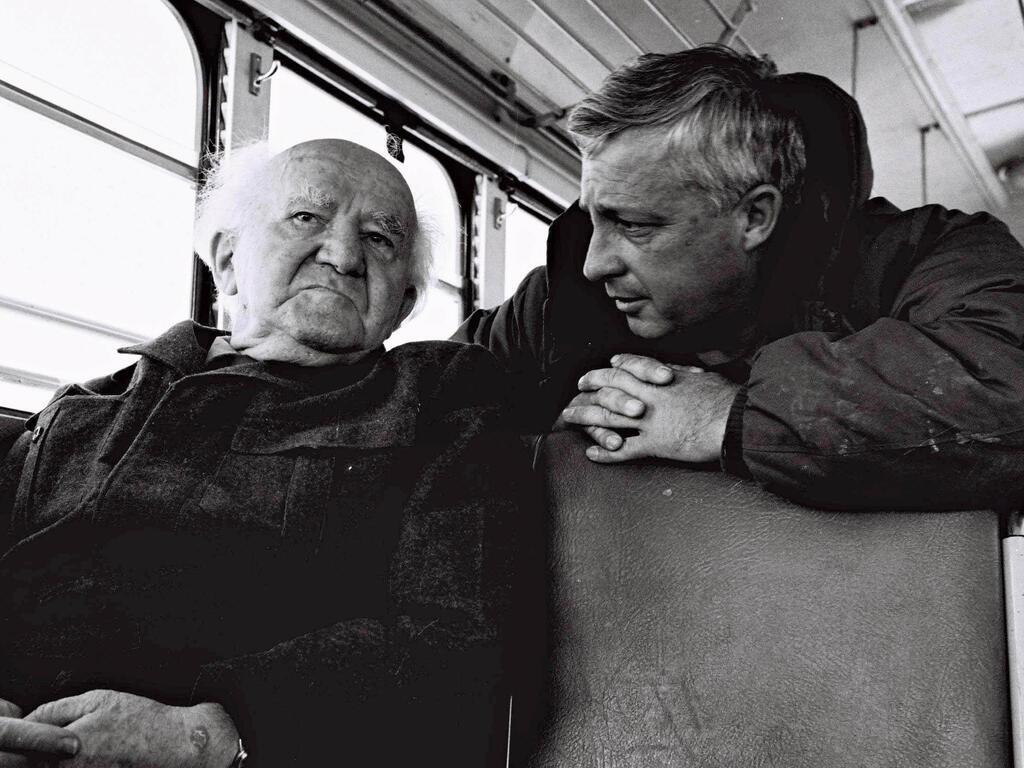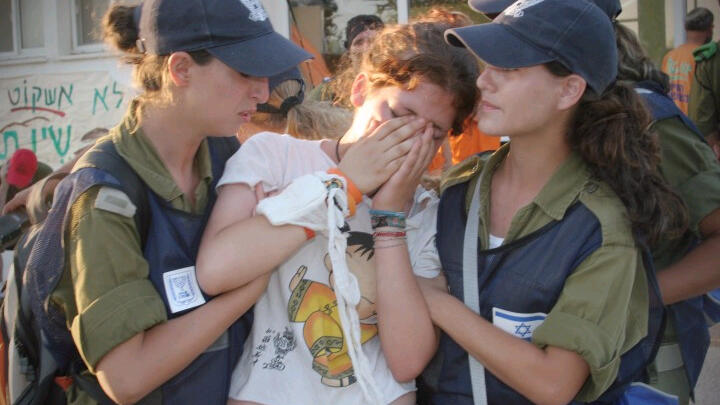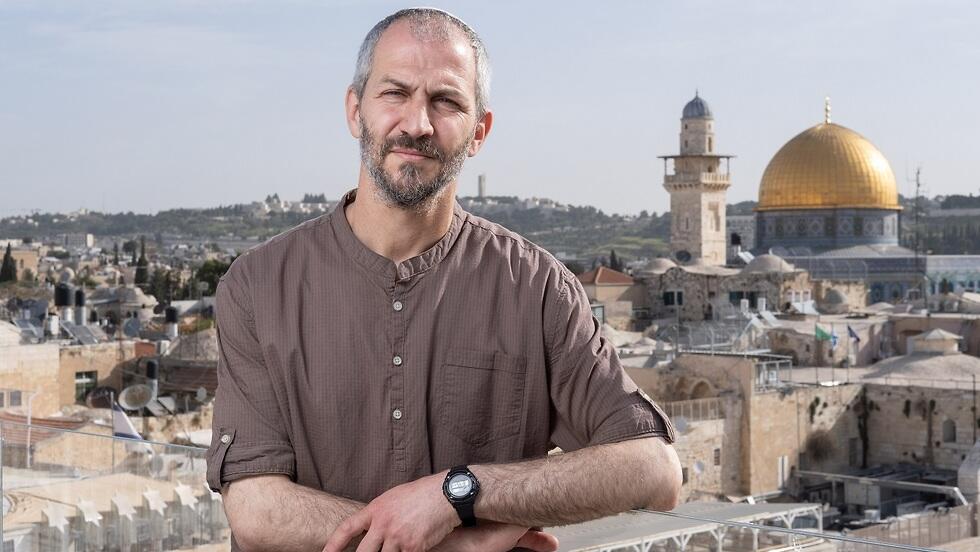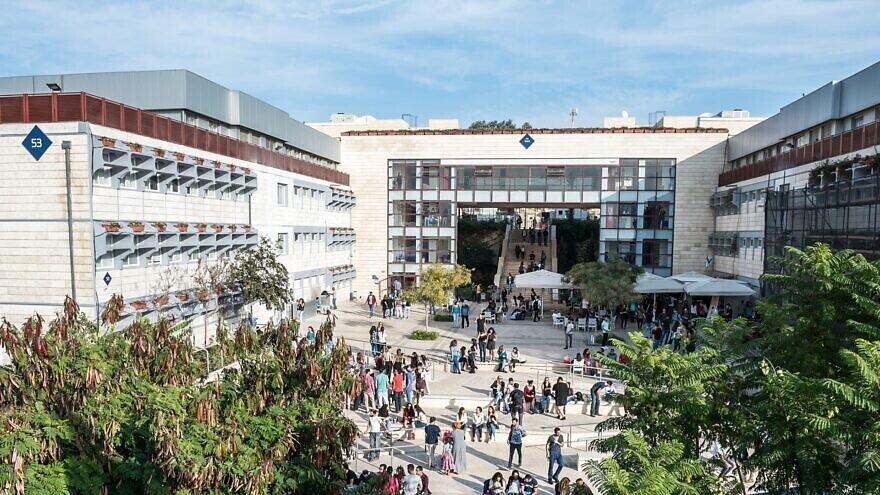Getting your Trinity Audio player ready...
In 2005, Israel unilaterally disengaged from the Gaza Strip. As a result, roughly 8,000 people were forcibly removed from their homes inside a settlement bloc known as Gush Katif. September 12 marked the anniversary of the completion of that disengagement, trauma of which still lingers on.
Some 17 years later, the mention of Gush Katif still sparks feelings of outrage among Israelis, especially those who were evicted - mostly Orthodox Religious Zionists.
10 View gallery
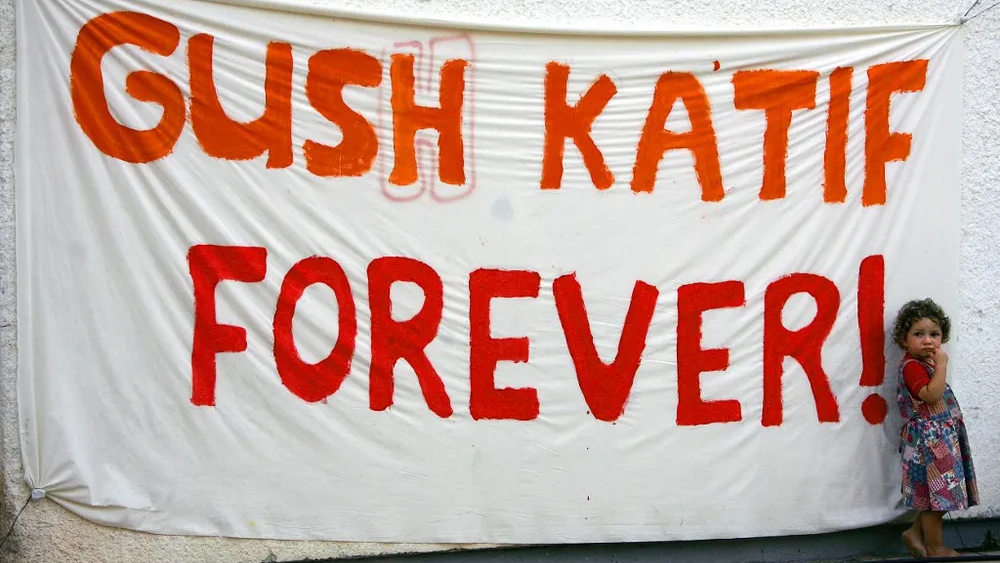

A young child stands next to a banner with the inscription 'Gush Katif Forever' at the Gaza Strip settlement of Nezer Hazani, August 17, 2005
(Photo: NICOLAS ASFOURI / AFP)
Background
Israel’s 11th Prime Minister Ariel Sharon - who served from 2001 to 2006 - was known as “the father of settlements,” urging young settlers to “run and grab as many hilltops as they can.”
That’s why it was so shocking when, in 2003, Sharon proposed total disengagement from the Gaza Strip.
The preliminary parliament vote passed in October 2004, with sixty-seven in favor, forty-five against, seven abstentions, and one absentee. The plan was officially approved in 2005, implemented in August, and completed in September of that same year.
As a result, the 8,000 Jewish settlers from settlements in the Gaza Strip were relocated. The army gave them two options: leave voluntarily and receive a compensation package, or be forcibly evicted.
The 17-settlement bloc known as Gush Katif - located on the southwestern edge of the Gaza Strip, bordered on the southwest by Rafah and the Egyptian border, on the east by Khan Yunis - was first established in 1986.
10 View gallery
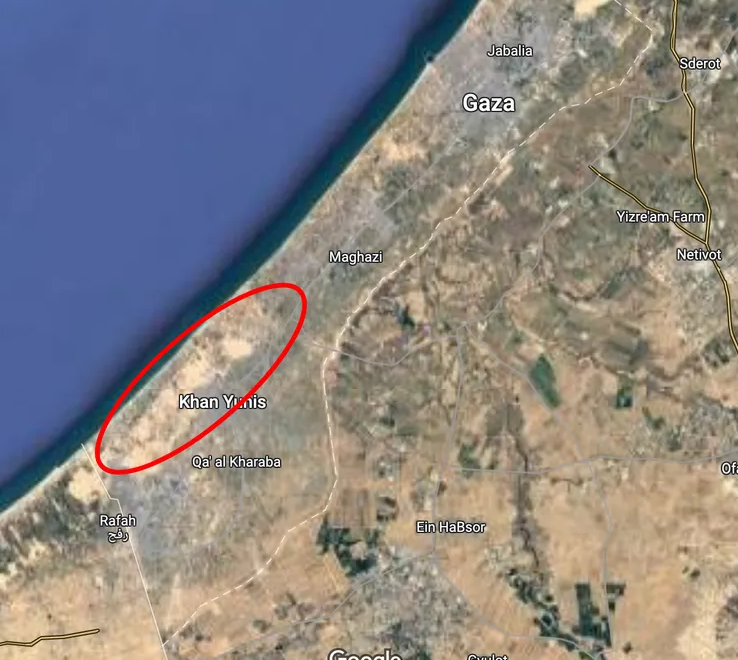

A map of Gaza Strip denoting the location of the Gush Katif settlement blocs
(Photo: Edited GoogleMaps, screenshot: Simcha Pasko)
According to the Jewish community, their history in the area extends far before then.
Israel's army closed Gush Katif to non-residents on August 13, 2005, and just two days later, forced evacuations began. During the disengagement, Israeli authorities destroyed all Jewish residents' homes but left significant infrastructures such as electricity, pipes and roads.
Palestinians dismantled what remained, using the sites for construction materials.
The eviction of all residents, demolition of the residential buildings and evacuation of associated security personnel from the Gaza Strip was completed by September 12, 2005, 17 years ago Monday.
Less than a year later, elections were held in the Palestinian Territories, with the militant group Hamas seizing power in Gaza and leading the enclave ever since.
10 View gallery
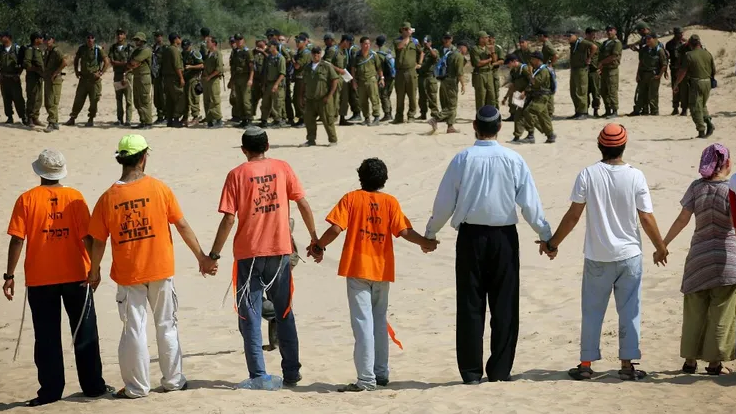

Israeli settlers link arms to prevent Israeli soldiers from entering the rear entrance to the southern Gaza Strip Gush Katif settlement of Neve Dekalim, 15 August, 2005
(Photo: DAVID FURST / AFP)
Backlash
The disengagement was controversial among Israelis.
Early polls showed that most Israelis supported the plan to give up the Gaza settlements. Supporters of the project argued that this move, while painful, was necessary to protect Israel in the long term. Sharon believed it was Israel's best way of extricating itself from the conflict with the Palestinians, decreasing the Jewish state's vulnerability to terrorism, and many agreed.
But while the Israeli government said that more than half of the settlers agreed to leave voluntarily, many refused and resisted. The settlers, backed by the right-wing, claimed that Israel had a historic right to the land.
10 View gallery
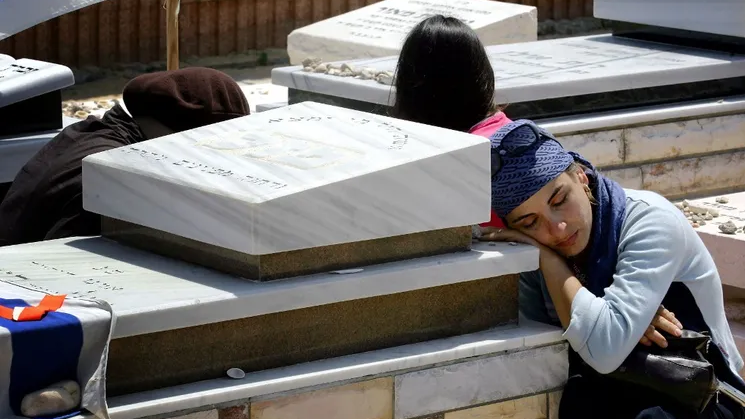

An Israeli mourns over the grave of a relative for last time prior to the uprooting of graves as part of Israel's ongoing disengagement plan at the Gush Katif cemetery, August 23, 2005
(Photo: DAVID FURST / AFP)
People who opposed the plan also argued that the decision to disengage was a capitulation to Palestinian terrorism and not in the context of mutually agreed concessions.
The first protest was held in May of 2005, with over 400 protestors arrested, half of them youths. And in June 2005, a Channel 2 poll showed that public support for the plan had fallen below 50 percent for the first time.
Right before the evacuation, in August of 2005, nearly 50,000 Israelis protested in the Gaza border communities, with over 15,000 police officers and soldiers attempting to prevent them from reaching the Gaza enclave.
Settler leader Avner Shimoni said at the time, “It is impossible to stop the masses of Israel who have only one goal, to reach Gush Katif and overturn this cruel decree.”
The Rabbinical Council of Judea and Samaria and Rabbi Avraham Shapira, a former Ashkenazi Chief Rabbi of Israel, even called upon religious soldiers to refuse orders to facilitate evacuation in the settlements.
On August 11, 2005, 150,000 and 300,000 people massed in and around Tel Aviv's Rabin Square for an anti-disengagement rally, which organizers called "the largest expression of public protest ever held in Israel."
10 View gallery
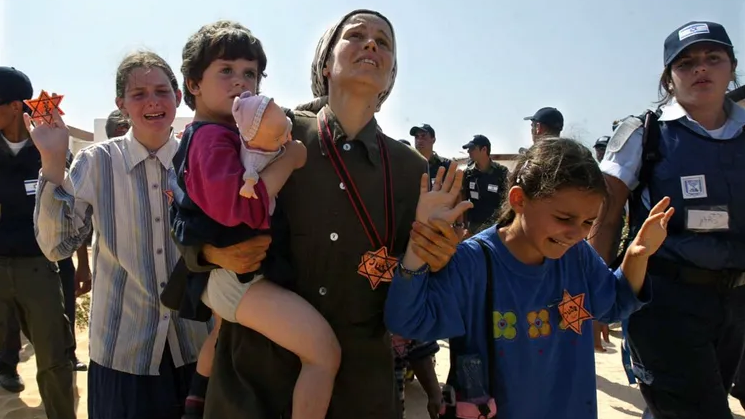

Jewish settlers employ Nazi-era imagery, including Stars of David on their T-shirts, in protest against their forced removal by Israeli troops, August 17, 2005
(Photo: RONI SCHUTZER / AFP)
17 years later
Gush Katif has been called a “lingering wound,” one still open and fresh for Israelis.
“It’s a trauma,” said Hillel. “The whole country was hurting.”
He noted that he thought it did nothing but make the Israeli-Palestinian conflict worse.
“It’s like giving the school bully your lunch money before he grabs it off you,” Hillel noted. “But it doesn’t help. And now he will come back every other day expecting the money.”
Daniel and Ayal, two Israelis who were only six when the withdrawal happened, explained how the event was presented to them as they got older.
“Everyone has an opinion on it. How could you not?” Daniel noted. “One of the main things, for many people, is the idea that a Jew should never kick out another Jew. It was us against ourselves, which is - for many people - unacceptable.”
Slogans like "Jews don't evict Jews!" could be found on bumper stickers during the time of the disengagement, as the protests became a political movement. Residents of Gush Katif even chanted the saying in Hebrew during their final hours in the community.
“At the time of the withdrawal, my parents tried to censor it from me,” Ayal explained. “They are very patriotic and didn't want me to grow up in fear that my own country could do such a thing to me.”
To Daniel, and many other Israelis, Gush Katif is a “sign of the government's failure.”
“The public was against it. Everyone was against it,” he explained. “And the government did it anyway.”
Daniel explained the prevailing idea, translated from Hebrew, that “we shall return to there.”
“I don’t think very many people still believe it. But, when it happened - and for many years after - people said, ‘we shall return there. We have to make things right.’”
Several people still believe in that idea.
In July 2022, Religious Zionist candidate Arnon Segal wrote during his campaign announcement, "It is time to begin to plan a return to Gush Katif.”
"Yes," he wrote, "to physically return and rebuild it."
The West Bank
The topic of Gush Katif tends to come up when the idea of withdrawing from the West Bank is mentioned.
West Bank leaders feared at the time that the Gaza pullout would lead to further withdrawals from areas claimed by the Palestinians, as four settlements in the West Bank were also dismantled as part of the 2005 disengagement.
Many who were evacuated from Gush Katif reestablished themselves in West Bank settlements, and the fear of another forced withdrawal remains. A vast number of Gush Katif settlers relocated to the city of Ariel, one of four thriving city settlements in the area. Ariel has over double the number of people that Gush Katif once did, its own soccer team and a university.
The idea that the government could dismantle Ariel and the city settlements like it is unconscionable to many Israelis.
Ayal explained, “I think Gush Katif proved something very important. Since the withdrawal, there were three wars fought in the area that was given,” referring to several of the Israeli operations that took place in the Gaza Strip.
“Those wars took thousands of lives.”
“When there are no settlements, there is no military to keep the peace. When there is no military keeping the peace, deadly wars take place.”
And although, to many religious-nationalists, Gaza is a part of the Land of Israel that God promised to the Jews, the land of the West Bank is far more critical.
The claim that Jewish presence in the area has existed for thousands of years is one that religious Zionists frequently tout.
Pro-Israel watchdog HonestReporting notes, regarding areas near the Green Line that would remain part of Israel in any peace agreement with the Palestinians, "Gush Katif didn’t have the wider consensus support that the West Bank blocs have."
Additionally, Palestinians' supposed destruction of what remained haunts those forced from Gush Katif. The prevailing idea for many Israelis is that the Palestinians were left some 3,000 greenhouses to assist their economic regrowth, which they immediately destroyed in the aftermath of the withdrawal.
Journalist Richard Chesnoff wrote in the Huffington Post in 2014, “Even the network of miraculously flourishing greenhouses that Israeli settlers had built became Palestinian, something Israel hoped would help convince the Gaza leadership to keep peaceful borders with the Jewish state.”
“That didn't happen. The chain of greenhouses was soon looted and all but completely destroyed.”
10 View gallery
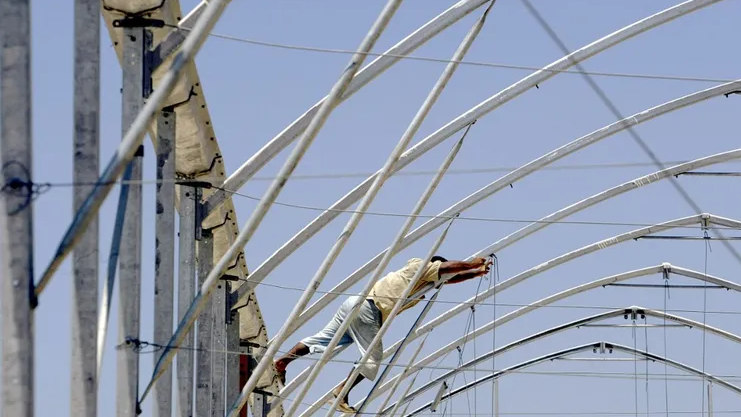

A Palestinian worker unbolts a metal framework as he and others help dismantle Israeli owned greenhouses near the New Pe'at Sade settlement of the Gush Katif settlement bloc in southern Gaza Strip, July 29, 2005
(Photo: Roberto SCHMIDT / AFP )
Religious Zionists consider the disengagement a watershed moment that can not, and most likely will not, be repeated.
“In practice, it's impossible,” Daniel said regarding the thought of completely withdrawing from the West Bank. “There would be massive unrest; people would fight for every chunk of land. They wouldn't let anyone kick them out again.”
One settler removed from Gush Katif, Dror Vanunu, told The Jerusalem Post in 2020 that "another evacuation will never happen."
“There is no doubt that Gush Katif saved Judea and Samaria," he stated, using the biblical term for the West Bank. He added that the continued violence from Gaza led many Israelis to believe the disengagement was a mistake.
One day, he continued, he hopes that “I - or my children - will return to Gush Katif.”
Reprinted with permission from i24NEWS


